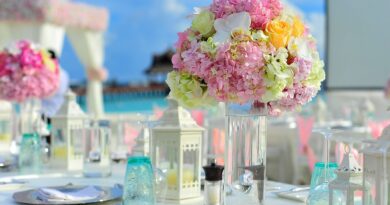From Lehengas to Tuxedos: The Must-Have Styles for Every Type of Traditional Wedding
Traditional weddings come in many shapes and sizes, with different dress codes and customs depending on the culture and religion of the couple tying the knot. However, one thing they all have in common is the importance of dressing appropriately for the occasion. Whether you’re attending a Hindu wedding in India, a Jewish wedding in America or a Muslim wedding in the Middle East, there are certain styles that you can’t go wrong with. Here are some must-have outfits for every type of traditional wedding.
For women, lehengas are a staple of Indian weddings. These elaborate skirts and tops can be made of silk, chiffon, sequins, or embroidery and come in a rainbow of colors. They are often paired with heavy jewelry, such as chandelier earrings, bangles, and necklaces, and a sheer dupatta (a long scarf) draped over the head. Ideally, a lehenga should be colorful and vibrant, without being too revealing or extravagant.
For men, sherwanis are the go-to outfit for Indian weddings. These long coats are made of silk or other luxurious materials and feature intricate embroidery or beading. They are usually worn with churidar pants (tight, tapered trousers) and a turban or a safaa (a headdress made of silk). Men can accessorize with a sword or a hand-held fan, depending on the region and the customs of the wedding.
In Jewish weddings, women can wear formal gowns or cocktail dresses in dark colors, such as black, navy, or burgundy. The fabric should be elegant and flowing, but not too revealing or flashy. It’s traditional to cover the shoulders with a shrug, a shawl or a jacket, and to avoid wearing anything too tight-fitting or low-cut. Men, on the other hand, are expected to wear a tuxedo, with a bow tie, a white shirt, and black shoes. They can also wear a kippah (a skullcap) and a tallit (a prayer shawl) if they are Jewish themselves or if the wedding takes place in a synagogue.
In Muslim weddings, women are often dressed in abayas (long, flowing black garments) or modest dresses that cover their arms and legs. They may also wear hijabs, which are headscarves that cover the hair and neck. The dress code may vary depending on the region and the level of conservatism of the family, but it’s important to respect their customs and dress modestly. Men can wear formal suits or traditional clothing, such as a thobe (a long white robe) or a dishdasha (a similar garment, often in a different color).
No matter what kind of traditional wedding you’re attending, the key is to dress appropriately and respectfully. Be mindful of the cultural and religious sensitivities of the couple and their families, and avoid anything too revealing, flashy or inappropriate. With the right outfit, you can celebrate the joy and beauty of their special day while honoring their traditions and customs.









